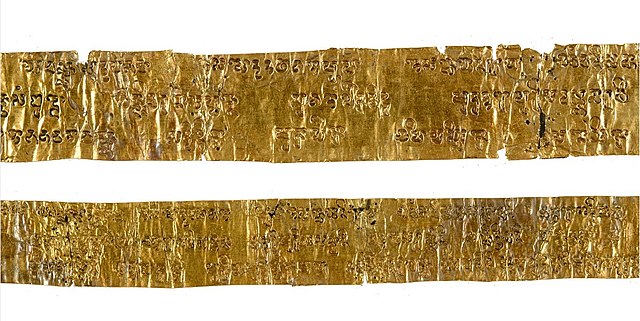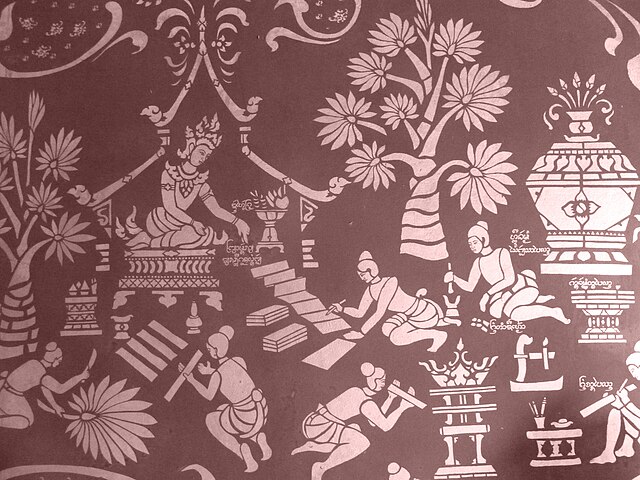Since the death of the historical Buddha, Siddhartha Gautama, Buddhist monastic communities ("sangha") have periodically convened to settle doctrinal and disciplinary disputes and to revise and correct the contents of the Buddhist canons. These gatherings are often termed Buddhist "councils". Accounts of these councils are recorded in Buddhist texts as having begun immediately following the death of the Buddha and have continued into the modern era.
The earliest councils are regarded as real events by every Buddhist tradition. However, the historicity and details of these councils remains a matter of dispute in modern Buddhist studies. This is because various sources belonging to different Buddhist schools contain conflicting accounts of these events and the narratives often serve to bolster the authority and prestige of specific schools.
A mural depicting the first Buddhist Council near Rajagaha, Nava. Jetavana temple, Nava Jetavana Park, Shravasti, Uttar Pradesh.
Emperor Asoka and Moggaliputta-Tissa at the Third Buddhist Council, at the Nava Jetavana, Shravasti
The minor pillar edict of Sarnath discusses divisions in the sangha and how the sangha was unified through the aid of the emperor Ashoka. Three ‘Minor Pillar Edicts’ (at Sarnath, Sāñchī, and Kosambi) discuss the divisions and unification.
Emperor Kanishka I
Tipiṭaka or Tripiṭaka, meaning "Triple Basket", is the traditional term for ancient collections of Buddhist sacred scriptures. The Tripiṭaka is composed of three main categories of texts that collectively constitute the Buddhist canon: the Sutra Piṭaka, the Vinaya Piṭaka, and the Abhidhamma Piṭaka.
Tripiṭaka manuscript from Thailand
Tripiṭaka manuscripts on Gold Plate, Burma
The woodblock of Tripiṭaka Koreana in Haeinsa, Hapcheon, South Korea
Tripiṭaka writing








